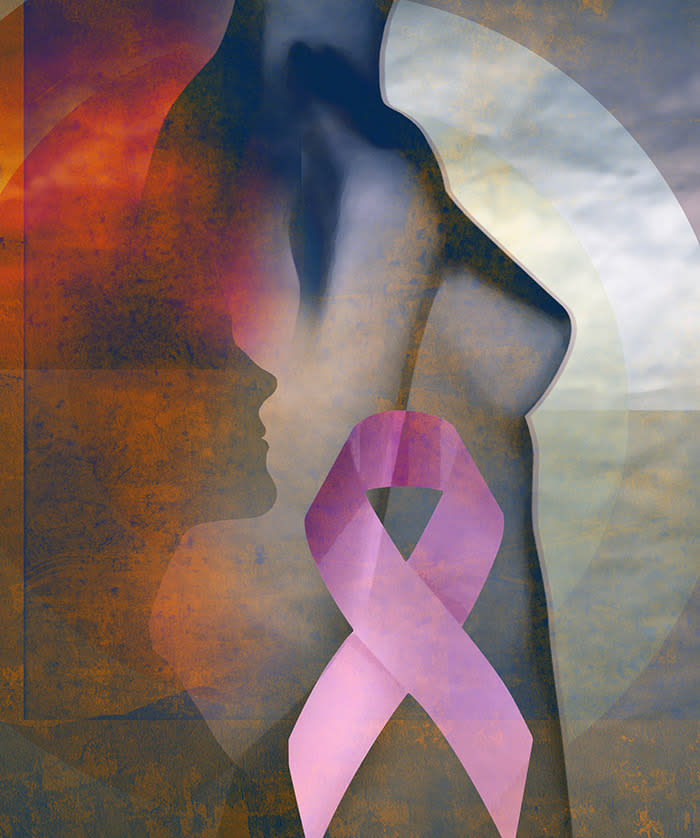New Breast Cancer Screening Guidelines: Here's What's Changed, and Why

Women ages 50 to 74 should have mammograms every other year, according to new breast cancer screening guidelines from the U.S. Preventive Services Task Force. The recommendations only apply to women who do not have a high risk for breast cancer. (Photo: Corbis Images)
Mammograms save lives. That statement has been drilled into our heads, and is supported by research. But mammograms also have drawbacks, such as false positives and unnecessary biopsies.
New guidelines from the government’s U.S. Preventive Services Task Force (USPSTF) released today (Jan. 11) reflect this complexity. The final guidelines recommend:
Women ages 50 to 74 should be screened every other year (in contrast to other groups’ guidelines, which recommend annual screening).
For women ages 40 to 49, mammograms are optional; the decision to be screened should be based on a woman’s risk factors, preferences, and values.
The new recommendations are for women who do not have an elevated risk for breast cancer.
The news comes on the heels of new breast cancer screening guidelines from the American Cancer Society (ACS). In October 2015, the ACS updated their guidelines for the first time since 2002. They call for screening every other year from ages 45 to 54, and annual screening beginning at age 55. (Breast cancer risk increases with age.)
Watch: The USPSTF explains the new breast cancer screening recommendations:
Why Breast Cancer Guidelines Conflict
Conflicting guidelines may seem confusing, but that’s because breast cancer screening isn’t one-size-fits-all. Your personal preferences and individual health history are important to consider, says Therese Bevers, MD, medical director of the Cancer Prevention Center at the University of Texas MD Anderson Cancer Center.
“I think a woman needs to know the benefits and drawbacks of screening, and understand if she’s more concerned about the benefits or if she’s more concerned about the harms,” Bevers tells Yahoo Health.
Guidelines also focus on populations as a whole, on average. “The challenge of the current set of guidelines, which is a statistical process, is using them to individualize recommendations to patients,” says Richard Reitherman, MD, PhD, medical director of breast imaging at MemorialCare Breast Center at Orange Coast Memorial Medical Center in Fountain Valley, California. “How do we [medical professionals] take this guideline and implement it to the patient sitting in front of you?” Reitherman tells Yahoo Health.
The Benefits and Harms of Breast Cancer Screening
Weighing when to begin mammography and how often to be screened depends on the benefits and drawbacks of the procedure — and how you feel about them.
“To look at benefit and harm on a population level, the benefit is not dying from breast cancer,” Reitherman says. “The harm is that people who will never get breast cancers will go through a bunch of tests that are unnecessary. The problem is, we don’t know which people will get breast cancer.”
Most people are familiar with the benefits of breast cancer screening: mammograms catch cancer earlier, when it’s easier to treat. “Fewer women die from cancer with regular screening, the data shows for women ages 40 to 75,” Bevers says.
The harms are more complex. One of the most well-known downsides to screening is a false-positive, where a scan suggests that you may have cancer, but it turns out that you actually don’t. That’s why mammograms alone do not diagnose cancer. “It may take additional views [to make a diagnosis], or it may take a needle biopsy,” Bevers says.
Related: False Positive Mammograms Linked to Slight Cancer Risk Increase
It’s also important to think about the harm associated with not screening, Bevers stresses. “A woman who doesn’t get a mammogram can still incur harms,” she says. Women who have a clinical presentation of breast cancer, such as finding a lump, are more likely to have a more advanced breast cancer. Bevers adds, “They’re more likely to need chemotherapy, more likely to have a reoccurrence, and more likely to die from the disease.”
How to Make the Right Choice for You
So, how do you weigh all of these factors? Bevers says that the key starting question is, “What’s my risk of breast cancer?”
Although no one can say for sure whether or not you’re going to get breast cancer, doctors can give you some idea based on your family history, past test results, and other factors.
“If she’s at increased risk, she may need to start earlier or have more frequent screenings,” Bevers says.
Related: Ultrasound Useful in Diagnosing Breast Cancer for Certain Women, Study Shows
It also depends on your personality, Reitherman says: “Are you the kind of person who says, ‘I want to do everything I can?” or are you the kind of person who says, ‘I’ll take the risk?’”
Likewise, are you more focused on the benefits of screening, or are you more concerned about the harms? For instance, are you very anxious about unnecessary biopsies? How would you feel about receiving a false-positive result?
The good news: Most private insurance companies, Medicare, and Medicaid cover annual screenings beginning at age 40, Reitherman says. So many women can make this decision without worrying about paying out of pocket.
“It goes back to your goals,” Bevers explains. “If it’s about doing everything you can to reduce your risk of dying from breast cancer, that means you’re a more benefits person. If you’re on the other end of the spectrum, where recalls and follow-up tests really freak you out, then maybe screening every other year is better.“
Read This Next: Are These Yogurt Ingredients Safe to Eat?
Let’s keep in touch! Follow Yahoo Health on Facebook, Twitter, Instagram, and Pinterest.

